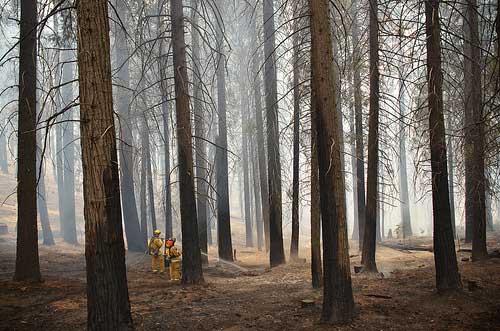
Last week, at both the figurative and literal eleventh hour, Congress passed H.R. 2775 – the Continuing Appropriations Act, 2014. In addition to reopening the federal government and temporarily suspending the debt ceiling, the bill also provides additional funding to several federal agencies, including the U.S. Forest Service, to assist with their ongoing operations.
We discussed the U.S. Forest Service’s severe shortfall in its emergency firefighting funding back in August, as the Yosemite National Park fire raged. At the time, the U.S. Forest Service was down to $50 million in its budget line item for wildfire suppression for the year. When sequestration kicked in earlier this year, $115 million was removed from the budget for fighting wildfire. But over $1 billion had been spent by August to fight fires all over the west, including Wyoming, Montana, Idaho and California. The Yosemite fire alone cost $89 million to get under control, with tens of millions more required to repair the resulting environmental damage. The U.S. Forest Service was forced to undertake “fire borrowing” to try and cover the shortfall for this year, meaning the agency had to shift its finite resources from other programs such as capital improvement and rangeland research to fight ongoing wildfires. Last week’s legislation, however, gave the agency a little bit of breathing room in next year’s budget. Six hundred million of breathing room.

The Continuing Appropriations Act, 2014 provides that the U.S. Forest Service will have access to an additional $600 million to fight wildfire next year on top of the over $2 billion already requested for fiscal year 2014. The U.S. Forest Service also has flexibility to allocate the additional funding to programs that were bled under this year’s “fire borrowing.” American Forests, along with a broad coalition of over 90 conservation, timber, recreation, sportsmen and employer groups pushed Congress to take this step for the fiscal year 2014 budget in response to the drastic shortfall that occurred this summer due to the size and strength of this year’s fires. Well, Congress acted.
Along with the additional funds for the U.S. Forest Service, the Department of the Interior also found itself the recipient of an additional $36 million. These funds do come with a string attached, however, requiring that $15 million of the funding be used exclusively to restore and rehabilitate already burned areas. Like the U.S. Forest Service, the Department of the Interior can shift these funds to replenish programs that were raided to cover the additional amounts needed for this past wildfire season.
The additional funds in H.R. 2775 will hopefully ensure that next year the cost of fighting fires will not spread to other critical programs within the U.S. Forest Service and Department of the Interior. With its 30 percent funding increase, next summer, the U.S. Forest Service can focus on fighting the inevitable wildfires instead of worrying about how to equip and pay those who put their lives on the line to do so.